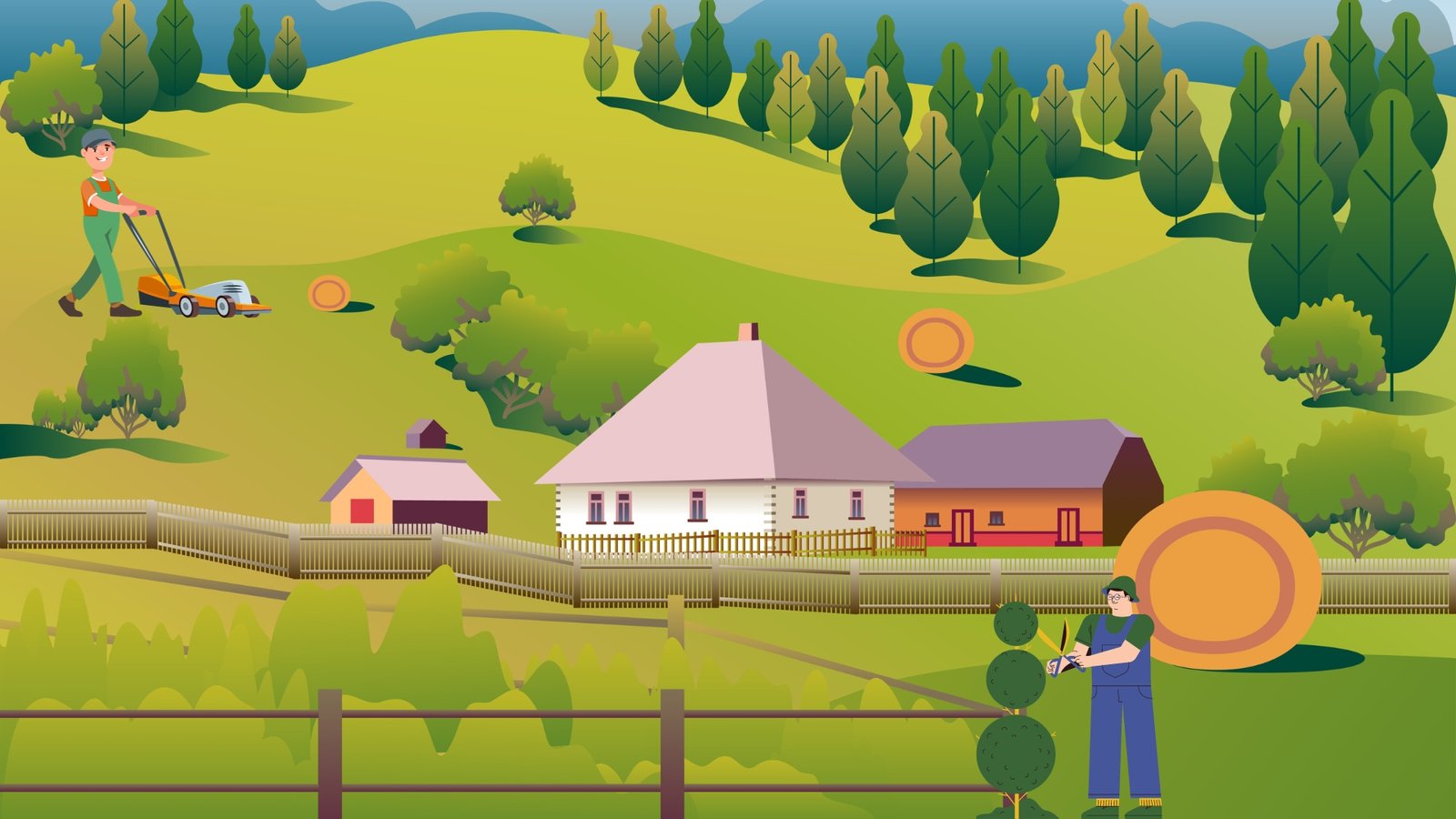
Landscaping is not just about making your outdoor space look aesthetically pleasing; it’s about creating an environment that serves a purpose, whether it’s enhancing your home’s curb appeal, providing a tranquil retreat, or adding functionality to your property. While there are numerous elements that contribute to a successful landscape design, the single most important thing is purposeful design. In this article, we’ll explore why purposeful design takes the forefront in landscaping and how it can transform your outdoor space.
Contents
10 Reasons Why Landscaping Is Important

Landscaping is more than just enhancing the visual appeal of your outdoor space; it offers a multitude of benefits that extend to your property, environment, and overall well-being. Here are the key importance of landscaping:
Curb Appeal:
A well-designed landscape enhances the aesthetics of your property, creating an inviting and visually pleasing environment that boosts your home’s curb appeal. This can increase property value and make a positive impression on visitors.
Property Value:
Landscaping can significantly increase the value of your home. A thoughtfully landscaped property is more attractive to potential buyers and can lead to higher resale prices.
Environmental Benefits:
Landscaping with native plants and trees can have a positive impact on the environment. It helps reduce soil erosion, conserves water, and provides habitat for local wildlife like birds and pollinators.
Energy Efficiency:
Strategically placed trees and shrubs can provide natural shade and windbreaks, reducing your home’s energy consumption. This translates into lower heating and cooling costs.
Privacy and Security:
Landscaping can create privacy by incorporating elements like hedges, fencing, or well-placed vegetation. It also enhances security by improving visibility and deterring intruders.
Health and Well-Being:
Well-maintained outdoor spaces encourage outdoor activities and relaxation, contributing to physical and mental well-being. Green spaces have been linked to reduced stress and improved mood.
Functional Use:
Landscaping can be tailored to suit your needs, whether it’s creating outdoor living spaces, play areas for children, or spaces for gardening and recreation. It makes your outdoor space more functional and enjoyable.
Improved Air Quality:
Plants and trees play a crucial role in improving air quality by absorbing pollutants and emitting oxygen. They can help reduce air pollution and create a healthier living environment.
Sound Barrier:
Trees and shrubs can act as natural sound barriers, reducing noise pollution from nearby streets or neighbors.
Community and Social Benefits:
Landscaping contributes to a sense of community and enhances neighborhood aesthetics. Well-landscaped public spaces encourage social interaction and community engagement.
Taking pride in your well-maintained landscape can provide a sense of personal satisfaction and accomplishment.
How to maintain the landscaping

Maintaining your landscaping is essential to keep it looking its best and ensuring the health of your plants and outdoor features. Here’s a general guide on how to maintain your landscaping:
Regular Watering:
Proper watering is crucial for plant health. Water deeply and less frequently rather than shallow and often. Use a soaker hose or drip irrigation to deliver water directly to the roots. Water early in the morning to reduce evaporation.
Mulching:
Apply a layer of mulch around plants to retain moisture, suppress weeds, and regulate soil temperature. Organic mulches like wood chips or compost also add nutrients to the soil as they decompose.
Weeding:
Regularly inspect your landscape for weeds and remove them promptly. Weeds compete with your plants for water and nutrients.
Pruning and Trimming:
Prune trees and shrubs to remove dead or diseased branches and to shape them. Trim overgrown bushes and hedges for a neat appearance.
Fertilizing:
Provide your plants with the necessary nutrients by applying fertilizer as needed. Use a balanced, slow-release fertilizer, and follow recommended application rates.
Pest and Disease Control:
Keep an eye out for signs of pests or diseases on your plants. Address issues promptly with appropriate treatments or consult a professional if needed.
Lawn Care:
Mow your lawn at the appropriate height for the grass type. Regularly aerate, fertilize, and overseeding your lawn to keep it healthy and lush.
Irrigation Maintenance:
Periodically check and maintain your irrigation system. Ensure that sprinkler heads are working correctly, and repair any leaks or clogs.
Seasonal Cleanup:
Perform seasonal cleanup tasks like raking leaves in the fall, removing snow from branches in the winter, and clearing debris and dead plants in the spring.
Patio and Hardscape Cleaning:
Clean patios, decks, and other hardscape surfaces regularly. This includes sweeping, power washing, and removing stains or moss. In addition to regular cleaning, consider hiring professional hardscape services to experience the numerous benefits of hardscape services, such as enhanced durability and aesthetics in your outdoor living spaces.
Inspect Drainage:
Ensure that your landscape has proper landscape drainage solution to prevent water pooling. Correct any drainage issues to avoid soil erosion and plant damage.
Conclusion
In the world of landscaping, purposeful design reigns supreme. It’s the cornerstone of a successful outdoor space, blending functionality, aesthetics, and efficiency. By approaching your landscape with intention and planning, you can create an outdoor environment that not only meets your needs but also enhances your quality of life and adds lasting value to your property. So, when it comes to landscaping, remember that the most important thing is to design with a purpose in mind, and for top-quality results, consider seeking out professional Fort Worth landscaping services to assist you in achieving your goals.









